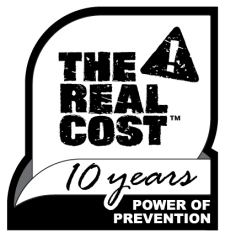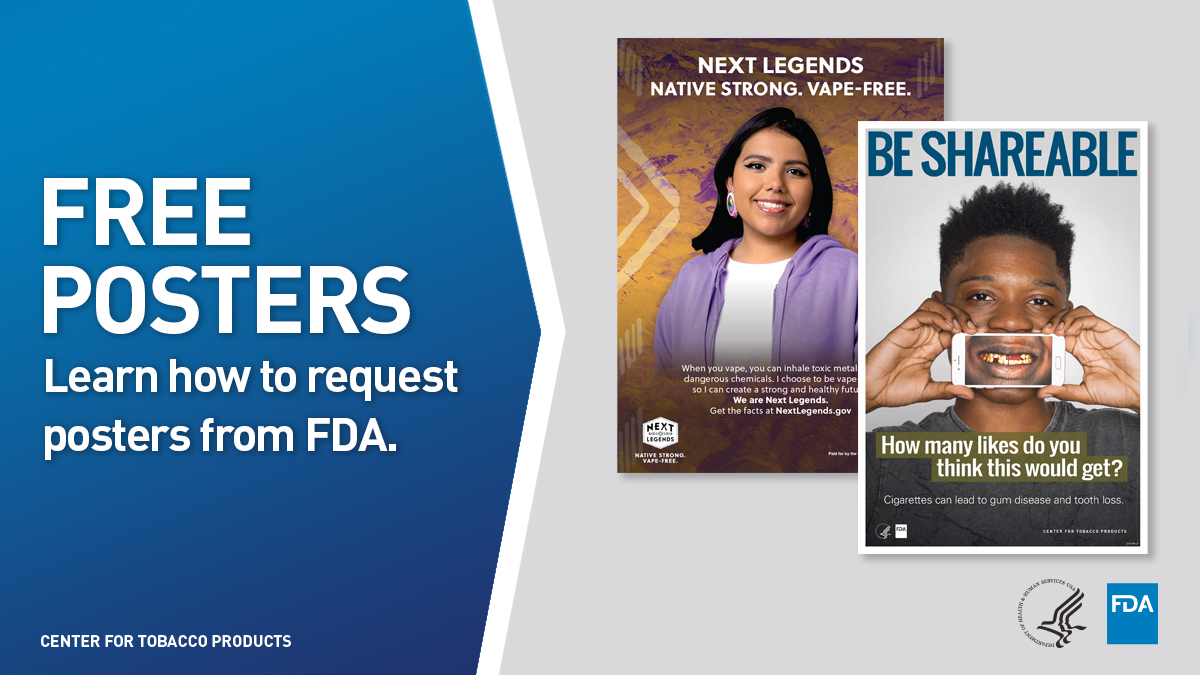The Real Cost Cigarette Prevention Campaign
On this page:
On Tuesday, June 11, 2024, from 3:00 to 4:15 p.m. EDT, join the Center for Tobacco Products for a webinar to commemorate the 10th anniversary of the award-winning “The Real Cost” youth tobacco prevention campaign. Presenters will provide information about the impact of the campaign on youth tobacco use, and the importance of public education to CTP’s comprehensive tobacco regulation efforts. The webinar is free of charge, but prior registration is required.
Background
FDA’s first tobacco prevention campaign, “The Real Cost,” is recognizing 10 years of success. Research shows “The Real Cost” prevented up to 587,000 youth ages 11 to 19 from initiating smoking between February 2014 and November 2016, half of whom might have gone on to become established adult smokers. Today, the campaign continues to reach teens and impact their beliefs on the negative health consequences of smoking.
Our Goal: Educate youth ages 12 to 17 who are at-risk for smoking cigarettes in the United States about its harmful effects.
Campaign Research
How Research Guides Our Campaign
"The Real Cost” campaign conducts research with teens on an ongoing basis. Our research provides key insights on our intended audience and how to best reach them with our campaign advertising (ads). Campaign research consists of formative and evaluation testing and surveys.
Through formative research, we continually refine our understanding of the campaign’s intended audience, stay up to date on the most effective ways to reach them, and identify and test potential prevention ads.
Formative research includes:
- Reviewing data from large national surveys, sales data, social media comments and trends and other sources to better understand teens, their media behaviors, and their attitudes and beliefs on tobacco.
- Directly conducting research with the campaign's intended audience to gather insights on their beliefs about tobacco products, lifestyles, and values.
- Testing potential ads through focus groups and surveys to understand which ads our intended audience finds the most understandable, believable, and motivating.
The campaign’s most recent focus group research with teens revealed insights about the way they think about tobacco:
- Some teens who smoke occasionally do not believe they will get addicted to tobacco and do not think of themselves as smokers.
- Teens recognize what addiction looks and feels like, such as having trouble sleeping because of nicotine cravings. Describing the symptoms of addiction is an impactful way to deliver a message about addiction.
- Sharing new facts about tobacco use, such as the impact that smoking can have on mental health, catches teens’ attention.
Evaluation research allows us to see how exposure to the campaign ads might change someone’s perceptions about tobacco.
Evaluation research includes:
- Conducting surveys with teens, some multiple times over several months with the same group of participants, to understand who has seen our ads and the impact that the ads have on knowledge, attitudes, and beliefs about tobacco.
- Evaluating our media strategy by conducting surveys at one point in time to assess how many teens have seen our ads and are aware of "The Real Cost" brand.
The latest outcome evaluation data collected between August and December 2023 show that approximately 42 percent of youth were aware of at least one “The Real Cost” cigarette prevention campaign advertisement. In addition, evaluation data of “The Real Cost” showed that the campaign continues to change the way teens think about tobacco. Teens who saw campaign ads were more likely to agree with statements about cigarettes impacting your health, such as losing your teeth or harming your lungs.
In addition to sharing our research findings through webinars and other public forums, our formative and evaluation research is often published in peer-review journals.
By preventing youth from becoming established smokers between 2014 and 2016, "The Real Cost" campaign will save more than $53 billion for youth, their families and society at large by reducing smoking-related costs like early loss of life, costly medical care, lost wages, lower productivity, and increased disability.
How We Reach Teens
“The Real Cost” cigarette prevention campaign uses digital marketing tactics and creative advertising to educate the audience on the negative consequences of smoking. Some of these marketing tactics included:
- Digital and streaming video advertising on platforms like Hulu and YouTube
- Streaming audio advertising on platforms like Spotify and Pandora
- Social media to engage the audience on platforms like Snapchat and Instagram
- Gaming-focused advertising on platforms like Twitch and Xbox
- A variety of influencers to extend the campaign’s messaging
Campaign Resources
Quitting Resources for Youth
FDA partners with the National Cancer Institute’s (NCI) Smokefree.gov teen initiative to provide youth with resources for quitting cigarettes. Resources and information on Teen.smokefree.gov are designed specifically for youth audiences by cessation experts. “The Real Cost” campaign connects youth to these resources on social media and various digital platforms. Some of the quit tools and resources include:
- Online chat with counselors trained to help youth quit
- SmokefreeTXT for Teens and quitSTART App to help quit smoking
- Quit Builder tool to help teens make a personalized quit plan
- Quizzes and Surveys to help teens understand vaping addiction
- Information about nicotine withdrawal and addiction
Free Tobacco Education Materials at FDA Tobacco Education Resource Library
Learn more about print materials, web content, and social media posts available for free that help keep communities, including LGBTQI+ smokers and Spanish language speakers informed about tobacco-related issues.
Campaign Ads
Video
Awards and Recognition
- Anthem Awards
- 2022: Bronze award in the Awareness Category – Best Influencer Endorsement
- Effie Awards
- 2024: Bronze Effie in the Sustained Success - Non-Profit category
- 2020: Bronze Effie in the Youth Marketing category
- 2017: Bronze Effie in the Youth Marketing category
- 2015: Gold Effie in the Disease Awareness and Education category
- Festival of Media Awards
- 2020: Grand Prix for Campaign of the Year
- 2020: Best Branded Content led by Digital Channels
- 2020: Best Communications Strategy
- 2020: Creative Use of Media
- The One Show Award
- 2020: Merit award at The One Show in the Branded Entertainment Games category
- Power or Purpose Award
- 2020: Power of Purpose for Brand Purpose
- 2020: Merit award at The One Show in the Branded Entertainment Games category
- Verizon Media Award
- 2019: Brandblazer for Premium Integrations
- AdWeek
- 2019: Media Plan of the Year Award for Best Use of Branded Content/Entertainment
- Clio Health Award
- 2019: Silver Clio award for Branded Entertainment and Content
- 2017: Bronze Clio award for Visual Effects
- Spikes Asia
- 2017: Silver Spike for Film Craft
- Shorty Award
- 2016: Creative work on Tumblr


